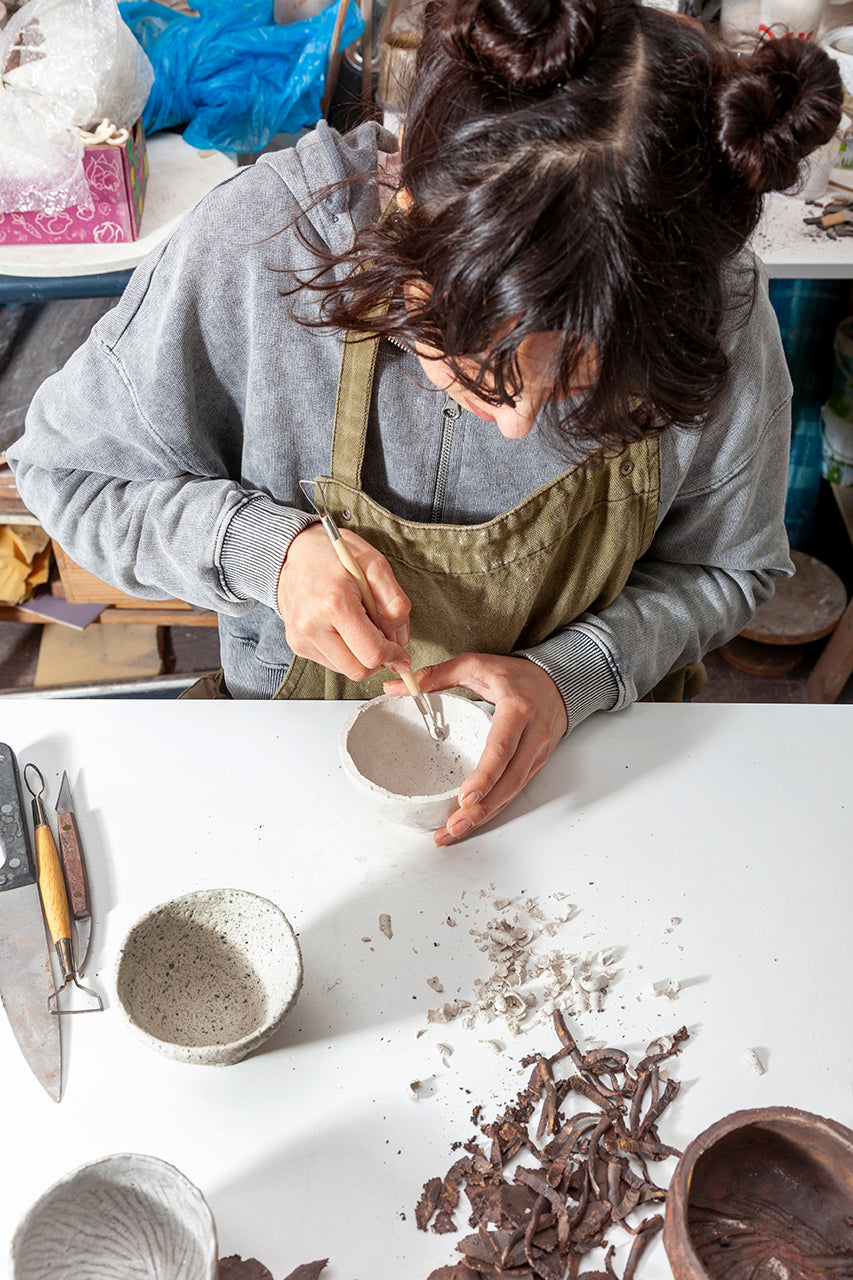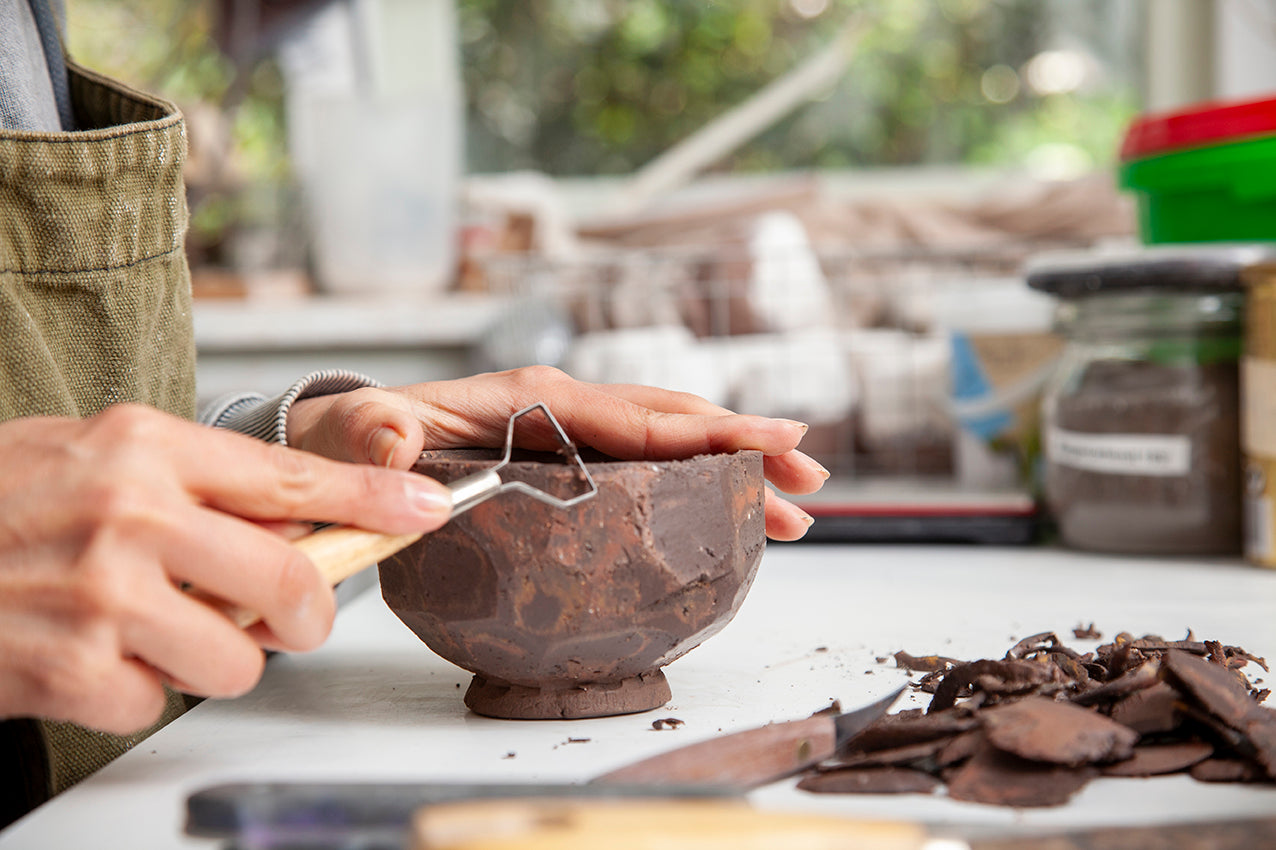a traditional Japanese ceramic technique

What is Kurinuki
-
Kurinuki single cup no. 16
Regular price €45,00Regular priceUnit price per -
Still Spume - Large
Regular price €58,00Regular priceUnit price per -
Still Spume - small
Regular price €45,00Regular priceUnit price per
What makes Kurinuki special?
The steps of the Kurinuki technique
-
1: The choice of clay
-
2: Tools and Technique
-
3: Shape and Asymmetry
-
4: Glaze and Surface Treatment
Recommended For You
Kurinuki set no.19 & no.20
The Kurinuki series are functional contemporary designs inspired by the classical Japanese ceramic called Kurinuki. In this technique, each item is gradually hand carved out of a clump of clay adopting to its nature. Every piece will always carry the traces of the artist's hands and tools with it and reveal its making process. Gestural pour-patterning accentuates the artistic quality of each piece. In her Kurinuki series, Sepideh sometimes emphasises on classical elements, while at the same time stepping beyond traditional forms.






Philosophical Interpretation
Discover more about Draumr
-

Bespoke items
Read moreDiscover the work of our makers and their stories, inspiring you to create a unique item made just for you.
-

Help with your interior
Read moreSometimes you need a little help to create a personal interior. We have the perfect solution for you.
-

About us
Join the movementWe connect interior dreamers with a growing network of Dutch furniture makers and independent designers.









